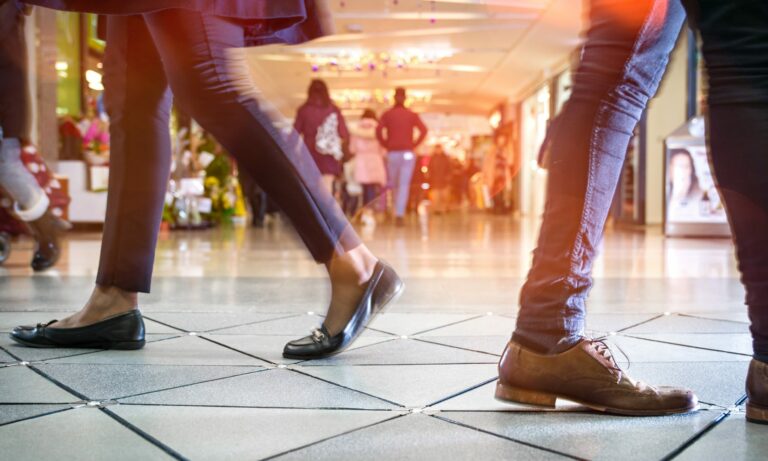Shopping centres were the clear winner on Black Friday with a rise in footfall of +16.8%, followed by high streets (+11.3%) and then retail parks (+7.1%), according to the latest Springboard data.
However, despite the uplift in footfall, the gap from 2019 was -14.1% below the 2019 level over the week and –17.5% below 2019 on Black Friday.
By Saturday footfall across all UK destinations levelled out with a rise of just +0.6% from the week before, although in shopping centres footfall rose by +3.8%. Sunday provided a further boost for retailers with a rise in footfall of +5.9% overall (+7% in shopping centres, +6.2% in high streets and +4.1% in retail parks).
Springboard said footfall in all UK retail destinations rose by +3.2% last week from the week before, with rises in consumer activity across all three key destination types. However, shopping centres were the most popular destination with a rise in footfall of +5.2% versus +2.3% in high streets and +2.7% in retail parks.
Footfall rose annually last week by +4.2% which was an improvement on +2.8% in the week before, and on Black Friday footfall was +9.3% higher than in 2021 across all UK retail destinations. While shopping centres recorded a higher uplift than high streets on Black Friday from the week before, the annual increase in high streets was greater than in shopping centres (+15.8% versus +5.6%) demonstrating that high streets had bounced back from last year to a greater degree.
Not unexpectedly, large city centres were hugely appealing for consumers over the Black Friday week, with increases of +4.9% in Central London and +4.3% in cities outside London, and +13.3% and +17.8% on Black Friday itself. However, towns that are attractive to visitors and offer festive attractions such as coastal towns and historic towns also benefited, with rises of +5.4% and +7.3% over the week and +13.6% and +18.6% on Black Friday.
The volatility in footfall last week was clear from a rise of just +0.7% on Sunday followed by a drop of -11.3% on Monday and then a rise of +13.4% on Tuesday. Footfall rose by +1.3% on Wednesday and then +5.2% on Thursday, but the key day was clearly Black Friday when footfall rose by +11.7% from the week before.
Diane Wehrle, insights director at Springboard, said: “UK retail destinations received a boost last week from Black Friday, with an increase in footfall from the week before that was twice as large as in the previous week.
Footfall rose in all three destination types, but shopping centres fared particularly well, which is a result we would expect to see as shopping centres comprise a critical mass of larger retailers, the vast majority of which actively participate in the event. However, notably footfall still remained significantly lower than pre-pandemic levels, indicating consistent nervousness around spending in the current climate.
“At the same time, consumers appeared to regard the occurrence of Black Friday last week as an excuse for making trips to high streets to enjoy the pre-Christmas festivities, with increases in footfall in city centres and towns that appeal to consumers for day trips. This included coastal and historic towns, which were more than twice as large as in high streets across the UK.
“Footfall over the week was fairly volatile, with a noticeable drop from the week before on Monday and a bounce back on Tuesday, followed by a lull on Wednesday with footfall then ramping up on Thursday, and peaking on Friday with a double digit increase in footfall from the week before. On Saturday footfall only increased marginally from the week before, but there was a further late boost on Sunday.
The increase in footfall last week meant that the annual increase from 2021 nearly doubled from the previous week. This greater annual uplift was driven mainly by high streets, demonstrating that while the week on week increase in footfall in high streets last week was not as large as in shopping centres, high streets performed better than on Black Friday week last year.”


